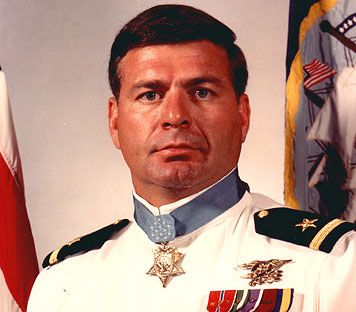SARASOTA — It’s difficult to imagine the full extent of the ghastly scene that played out on a North Vietnamese beach on the morning of Oct. 31, 1972. But a survivor whose actions would earn him the nation’s most prestigious award for heroism will be in Lakewood Ranch on Saturday to help another generation whose sons, fathers and brothers never made it back from more recent conflicts.
Retired Navy SEAL Michael Thornton, 67, will be the keynote speaker at the Ritz Carlton Members Golf Club, on a fundraiser for the Brian Bill Foundation. Named for the 31-year-old SEAL who died in a 2011 helicopter crash in Afghanistan, the Foundation intends to build a secluded retreat for Gold Star families coping with loss.
Sarasota builder Scott Bill, Brian’s father, hopes to raise $800,000 to finance a sanctuary, most likely on Manasota Key, for week-long group therapy healing sessions and relaxation. Between now and then, the Foundation is sponsoring a series of related weekend retreats. In February, it got seven Gold Star fathers to open up and commiserate at an outing Everglades City. Weekend equine-therapy retreats in Tampa for Gold Star Mothers and wounded warriors are set for May and June, respectively.
“People are carrying around a lot of pain; some don’t need something like this, but I’d say about 90 percent of them do,” says Bill, who has another son, Morgan, serving with the SEALs. “It does my heart a lot of good to see families like this interacting and helping each other out.”
Brian Bill belonged to SEAL Team Six, the unit that famously killed 9/11 architect Osama Bin Laden May 2011. He and 17 SEALS died alongside five other Navy special warfare operators and 14 additional U.S. and Afghan personnel when a rocket propelled grenade brought down their helicopter in August 2011.
Medal of Honor winner
That loss had a special resonance for Thornton, a commissioned lieutenant chosen to be a charter member of SEAL Team Six in 1980. Sixty two SEALs died in Vietnam, 32 of whom were friends or acquaintances. “When I came in, we had 236 SEALs,” says Thornton, who joined the Navy in 1967. “We have 2,800 living SEALs right now. I try to keep up with as many of them as I can.”
Decorated with a Silver Star, three Bronze Stars and a Purple Heart, among others, Thornton today says “I don’t think I’m deserving of the Medal (of Honor)” that put him in the history books. But without his instincts, at least two of his comrades – including yet another Medal of Honor recipient – would likely have died on that ill-fated assignment.
With the war winding down, command designed an amphibious night mission to capture, for interrogation, a North Vietnamese Army soldier or two from a unit occupying an outpost just south of the Demilitarized Zone. But at dawn, the small SEAL Team One squad and their South Vietnamese counterparts discovered their rubber landing boat had actually beached north of the DMZ, where they were outnumbered by NVA.
During a firefight that followed, team leader Lt. Tom Norris took a round in the left temple that left part of his brain exposed. Just six months earlier, Norris led a harrowing but successful rescue operation of a U.S. pilot downed deep behind enemy lines, and his actions under fire would eventually earn him the MoH.
Raked with grenade shrapnel, Thornton had to gun down two NVA troops to reach Norris. Thornton also assisted a wounded South Vietnamese commando into the sea for a rendezvous with a support craft. Using inflatables, Thornton spend several hours maneuvering the three of them away from shore guns. Thornton thus became the only Medal of Honor awardee to save the life of another recipient.
“At the end of the day,” says Thorton, “we were all still alive. The most important thing is, I got them all home safe.”











